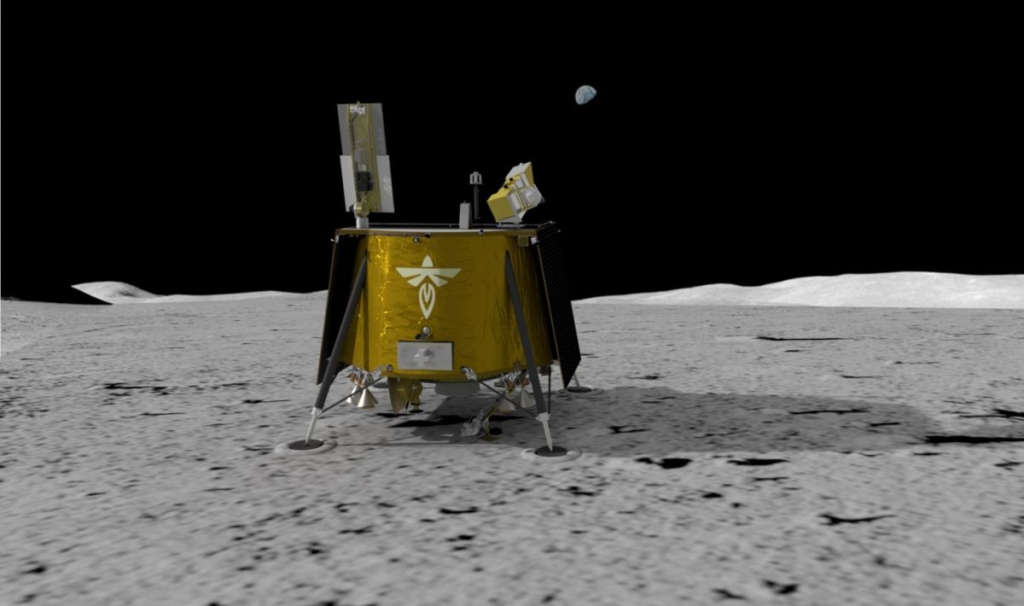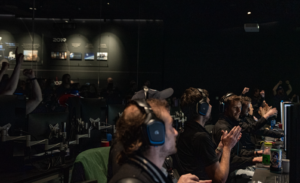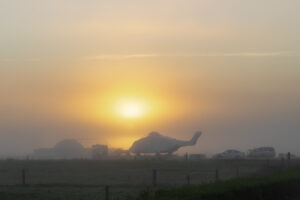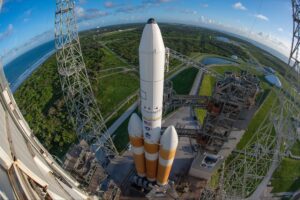
More Progress On Firefly Aerospace’s Lunar Lander
In the last few years, we have seen a significant increase in missions and general interest in going to the Moon. This not only includes NASA but also smaller companies being contracted by the agency to help facilitate the return of humans to the surface. We recently watched Firefly’s second orbital launch attempt which marked a massive milestone for the company.
In the last couple of weeks, we have learned more about their Blue Ghost lunar lander and some of the progress it’s making toward a Moon landing. This includes the delivery of multiple payloads apart of this mission, and other general preparation on Firefly’s end. All of which is very important as the launch date gets closer and closer.
Firefly Aerospace currently has a lot on its plate. In addition to this ambitious Moon mission, the company is trying to ramp up production of its Alpha rocket and launch much more frequently in 2023. Not to mention work on an even bigger launch vehicle named MLV. Here I will go more in-depth into the recent progress on Blue Ghost, what Firefly’s Mission to the Moon looks like, what to expect in the future, and more.
Recent Updates

Firefly’s first Blue Ghost mission was awarded by NASA as part of the Commercial Lunar Payload Services (CLPS) initiative and will deliver a suite of 10 NASA-sponsored payloads, as well as other commercial payloads, to the lunar surface in 2024. Starting in October, some of the initial payloads were delivered. On the 31st for example, the Stereo Camera for Lunar Plume-Surface Studies was sent to Firefly and completed a successful checkout.
Moving on to December 1st, Firefly received another payload for this mission when NASA delivered its Stereo Camera for Lunar Plume-Surface Studies. The four cameras, which will be placed around the base of the commercial lander, will begin monitoring crater formation from the precise moment a lander’s hot engine plume begins to interact with the Moon’s surface.
Next, around two weeks ago on the 21st, Firefly tweeted saying, “RadPC, a Blue Ghost Mission 1 payload, is one step closer to the #Moon! It’s been tested aboard the ISS & satellites, but we’ll provide the biggest trial yet by demonstrating its ability to withstand space radiation during our lunar mission.” After being delivered, in a special clean room in the facility where the lunar lander will be assembled, the students donned gloves and gowns to prevent contamination while taking RadPC out of the suitcase for final testing.
By now four payloads have been sent with many more on the way. These payloads will operate using lander-provided data and power resources through transit to the Moon, for an entire lunar day, and into the lunar night in Mare Crisium. This exciting mission will support scientific lunar research and will contribute to developing a sustainable presence on the Moon. Chris Culbert, manager of the CLPS initiative at NASA’s Johnson Space Center in Houston commented, “The payloads we’re sending as part of this delivery service span across multiple areas, from investigating the lunar soil and testing a sample capture technology, to giving us information about the Moon’s thermal properties and magnetic field.” Mare Crisium, where Firefly Aerospace’s Blue Ghost will land, is a more than 300-mile-wide basin where instruments will gather data to provide insight into the Moon’s regolith – loose, fragmented rock and soil – properties, geophysical characteristics, and the interaction of solar wind and Earth’s magnetic field. The payloads, collectively expected to total 207 pounds (94 kg) in mass.
Some of the other 8 payloads include unique devices expected to measure heat flow from the interior of the Moon, determine how lunar regolith sticks to different materials, characterize the structure of the Moon’s mantle, and more. The CLPS initiative is a key part of NASA’s Artemis lunar exploration efforts. The science and technology payloads sent to the Moon’s surface as part of the initiative will help lay the foundation for human missions and a sustainable human presence on the lunar surface.
Lastly, only two days ago Firefly tweeted mentioning, “Happy New Year from the entire crew at Firefly! It’s been a monumental year for us, but we’re just getting started. Now we’re focused on ramping up production of our launch vehicles, demonstrating our Space Utility Vehicle & preparing for our mission to the Moon. Cheers to 2023!” In the coming months, we can expect quite a few updates as more payloads arrive and physical progress is made on the lunar lander.
Firefly Moon Mission

Now that we know more about some of the progress being made and payloads being delivered to Firefly, we can take a closer look at the Blue Ghost lunar lander and how Firefly plans to land on the Moon. Blue Ghost features a 155-kilogram payload capacity and quite a few other features that help it support payloads on the way to the Moon and on the surface. Firefly highlights that nearly any landing site on the near side of the Moon is achievable with their lander, including the lunar poles. Their baseline lunar capture orbit is near-polar, providing access to any surface location. Communication back to the Mission Control Center (MCC) presently requires line of site to Earth, limiting transmission from polar regions to times when the Moon’s orbit around the Earth brings the relevant pole into view. However, the lander is designed to survive through communications blackout periods and to operate autonomously so long as the sun is shining. On-board processing and storage are used to operate payloads and store data gathered during blackouts so that they can be transmitted when communications become available again (usually after 8–20 days).
Over the last couple of years, we have seen quite a bit of progress on this mission and lander. Starting in February 2021, Firefly was awarded the original contract by NASA for $93.3 million. Right now, Firefly is developing, qualifying, and manufacturing Blue Ghost at its spacecraft integration facilities in Cedar Park, TX, about 30 minutes north of Austin. At the time of the award, Lander Program Manager Shea Ferring stated, “We are utilizing our Austin-based AS9100-certified engineering, test, and production facilities to build and operate world-class spacecraft. NASA’s support for our lunar program allows us to increase our capabilities for in-space services to the benefit of both U.S. government and commercial customers.”
With this unique contract from NASA, Firefly then went looking for a launch vehicle to get the payload there. Currently, Firefly does not have the capability to get this lunar lander along with all of its payload to the Moon. That’s why in May of 2021, Firefly awarded a contract to SpaceX to launch its Blue Ghost lunar lander. Once again Shea Ferring pointed out, “Firefly is excited to fly our Blue Ghost spacecraft on the highly reliable Falcon 9, which will deliver NASA instruments and technology demonstration payloads that support NASA science goals and NASA’s Artemis program. The high performance of SpaceX’s Falcon 9 launch vehicle permits a lunar transit using minimal Blue Ghost propulsion resources, thereby allowing the lander to deliver more than 150 kg of payload to the lunar surface.”
Next in October, some of the first significant progress on the lander itself was made when Firefly successfully completed the Critical Design Review (CDR) of their Blue Ghost lunar lander. The CDR paved the way for the construction of the Blue Ghost lander. At the time, Firefly and NASA were targeting 2023, however, since then, that time frame has been pushed back and is now 2024.
About 6 months later in April 2022, Firefly completed the Integration Readiness Review (IRR) of Blue Ghost M1. During the review, held at the company’s headquarters in Cedar Park, TX, the team marked key progress milestones across multiple areas, including: Structures, Fluids, Propulsion, Core Avionics, Battery Production, Harness Production, and more. At the time, the Blue Ghost Program Manager commented, “Passing IRR indicates we have the necessary team, hardware, equipment, and documentation to support lander integration. This team continues to overcome obstacles and perform at the highest levels, helping us pave our path to landing on the Moon in 2024.” Firefly’s next milestone will be the Lander Test Readiness Review which verifies readiness for primary system functional testing. Not long from now we should expect to learn more about this process and its progress.
Firefly Aerospace, like other companies within the industry, is trying to become more than just a launch provider. They point out that at present, no commercial or US entity possesses the infrastructure needed to communicate with the far side of the Moon, effectively limiting US missions to only half of the lunar surface. Firefly’s Space Utility Vehicle (SUV) is just one component the company is working on to try and change what’s possible. A vehicle that’s similar to Rocket Lab’s Photon spacecraft.
Conclusion
Firefly Aerospace is continuing to work hard toward increased rocket production and the upcoming Blue Ghost mission to the Moon. In the last couple of months, we have seen more and more payloads delivered to the company in preparation for the hopeful Moon landing. Not long from now, we can expect more physical progress on the lander and integration of various payloads. We will have to wait and see how it progresses and the impact it has on the space industry.



